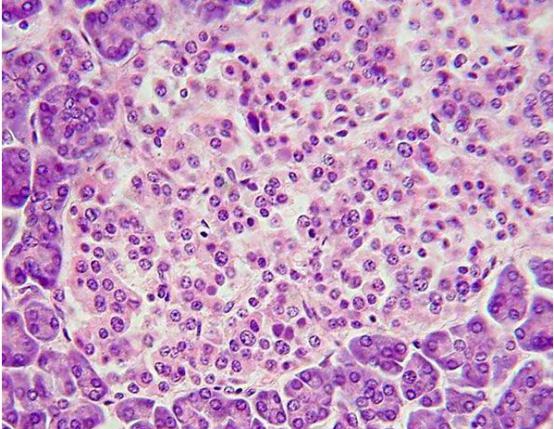On December 10, 2016 / biological valley BIOON / -- in a new study from the researchers of Swiss federal institute of technology in Zurich and East China Normal University and other institutions used a simple engineering method to create artificial β cells.
These artificial β cells are capable of doing anything as natural β cells: they measure the concentration of glucose in the blood, to produce enough insulin to lower blood sugar levels effectively.Related research findings are published in the Science of the December 9, 2016 issue of the journal, thesis entitled "β cell - mimetic designer cells provide closed - loop glycemic control".
Previous methods is carried out based on stem cells: the scientists add growth factor or whole into complex gene networks allow them to grow into β cells.
A little reprogramming on HEK cells
A new method of the researchers, they use a human kidney cells based on the cell line, HEK cells. They used the HEK natural glucose transport protein in the cell membrane and potassium channels.They use a voltage dependent calcium channel, a kind of insulin or glp-1 gene enhance their function, including glp-1 is a hormone involved in the level of blood sugar.
Voltage switch leads to insulin
In these artificial β cells, the natural glucose transporters HEK cells carried from the glucose in the blood to cells.When the blood sugar level exceeds a certain threshold, potassium channels closed.This will reverse voltage distribution on the cell membrane, causes calcium ion channels to open.With calcium ion flow into, it triggered inner signal transduction cascade of events, HEK cells leads to insulin or glp-1 produce and secrete.
In diabetic model mice of these preliminary tests of artificial β cells reveals these cells are very efficient: paper authors, eth Zurich, common communication science and biological systems engineering professor Martin Fussenegger said, "they exert better function than anywhere in the world to date any way longer to ." When implanted into diabetic model mice, these modified HEK cells function reliably, and in three weeks to produce enough insulin to regulate blood sugar levels or glp-1.
Useful modeling
In the development of the artificial β cells, the researchers used the eth Zurich science and biological systems engineering professor Stelling Jorg laboratory to build a computer model.This model allows the forecast cell behavior, the behavior of these cells can be verified by the experiment.Fussenegger said, "from the experimental data and use this model to calculate the numerical value is almost the same."
For a long time, Fussenegger and his team tries to provide diabetes treatment based on biological technology solutions. A few months ago, they are using stem cells from the individual adipose tissue producing β cells.However, this technology is expensive, it is because the β cells had to be made for each patient individually.This new method is cheaper, this is because the system is suitable for all patients with diabetes.
A long way to the market
However, people are still not sure when will these artificial β cells on the market.Before they can be used in the body, at first they have to experience many clinical trials.This type of clinical trials are costly, and often lasts for several years.Fussenegger estimates that "if our artificial β cells remove all of these obstacles, then they may be able to hit the market in the next 10 years.
